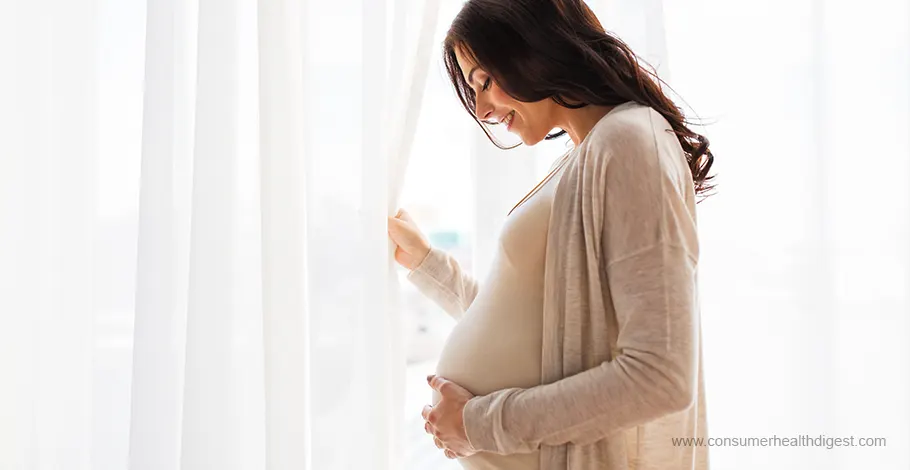Overview
Pregnancy is a profound and transformational experience that marks the beginning of a new life and the expansion of a family. It is a period filled with anticipation, planning, and a myriad of changes—both physical and emotional. Parents have always been found in a tight spot trying to explain to their children where babies come from.

Preparing for the arrival of a new member involves not only joy and excitement but also a considerable amount of care and attention to ensure the health and well-being of both the mother and the developing baby. Well, say no more. It is high time they face their fear and avoid the embarrassment of having to answer hard question after another about the origin of babies.
Nurturing a new life within requires understanding, patience, and support from loved ones and healthcare professionals alike. This guide aims to provide valuable insights and advice on how to navigate the multifaceted journey of pregnancy, from the early signs and initial stages to the final moments before childbirth.
What Is Pregnancy?
A woman is said to be pregnant when fertilization takes place and leads to the development of one or many embryos in the womb of the mother. It is estimated that at least 211 million pregnancies are recorded every year. With 220,000 cases of pregnancy, a report is filed every day. Also, there is an estimation that there is a child born every 3 seconds. The delivery of the fetus may take more or less than 40 weeks or about 280 days from the time of the last menstrual period (LMP). Scientists divide human pregnancy into three trimesters. We use the term embryo to describe a developing offspring in the first eight weeks of pregnancy period.From 9 weeks to conception, we use the term fetus should be applied. [1]
When Does Pregnancy Start?
For pregnancy to occur, there is a need for sperm to meet with an egg. The pregnancy period starts explicitly when the fertilized egg implants itself in the lining of the uterus.
What Happens During Pregnancy?
Conception takes place when the male sperm penetrates a female egg. It takes place in the woman’s fallopian tube right away after ovulation. It triggers a zygote to form. Immediately the egg is fertilized, the zygote starts dividing itself to make a cluster of cells called embryos. [2]
After 5 to 7 days of cell division and growth, the group of cells cling to the walls of the uterus and disperse their root-like veins known as villi. The purpose of the villi is to ensure that the embryo is attached to the lining of the uterus.
They later grow and enlarge to become the placenta that is responsible for feeding and protecting the fetus as it develops. The placenta supplies the embryo with nutrients and oxygen and helps in the discharge of waste. In the next 12 weeks, the muscles, blood, bones and nervous system, and internal organs start to develop. After finishing, the embryo is called the fetus.
The size of a fetus appears to be 1 inch long with the ears and facial features, fingers and toes start to appear. The fetus is allowed to develop inside the uterus cushioned by the amniotic fluid. It is the water that breaks before a baby is born. Most pregnancies tend to last from 37 weeks to about 42 weeks. With the due date calculated from the first day of the last period.
Baby Development During Pregnancy
Month 1:
As the fertilized egg continues to grow, an amniotic sac forms around it to cushion the embryo and give it a conducive environment to thrive. The placenta starts to develop too; it is a flat round organ responsible for transferring nutrients from the mother to the baby and removing wastes from the baby. [3]
A shape of a face will be formed with large dark circles to represent the eyes. The lower jaw, mouth, and throat develop during this month too. Blood cells also take shape and circulation starts. The tiny heart tube beats 65 times per minute by the end of 4th week . At the end of this month, the baby is 1/4 inch long.
Month 2:
The facial features of the baby continue developing. Ears emerge as folded skin on both sides of the tiny head. Tiny buds that later grow into arms and legs are formed. Toes, eyes, and fingers develop too. At this point, the neural tube which consists of the spinal cord, brain, and tissues of the nervous system is fully established. The sensory organs and the digestive system start developing. Bones begin to replace cartilages.
By the end of the second month, the baby is 1 inch long and weighs 1/30 of an ounce. At the 6th week, the heartbeat of the baby can be detected. After the 8th week, the baby is no longer an embryo; it is called the fetus. [4]
Month 3:
At this stage, the arms, hands, feet, toes, and fingers are formed. The baby can open and close a fist and mouth. Fingernails and toenails start to grow this month. The external ears are fully developed too. The teeth begin to emerge, not forgetting the reproductive organs. Although, it is a hard task to determine the gender of the child on ultrasound. By the end of the first month, a baby is fully formed. With a size 4 inches long and weighs at least 1 ounce. At this time the risk of a miscarriage is low because most of the critical development is finished.
Month 4:
When a mother is 22 weeks pregnant, with the use of a Doppler, you can hear the heartbeat of your child. Fingers and toes are fully formed. Eyebrows, eyelids, eyelashes, nails, and hair have developed too. The teeth of the baby and bones become dense as compared to the cartilage the baby was born possessing. The baby has the ability to suck a thumb, yawn, make faces, and even stretch. The nervous system starts to function and the reproductive organs are fully formed. At this stage, you can be able to use an ultrasound to find out the sex of the child. The end of this month, the baby is 6 inches long and weighs 4 ounces.
Month 5:
The infant can be felt moving this is because of muscle development and exercises it is undergoing. The movement is known as quickening. Hair starts to grow on the baby’s head. Soft hair called lanugo covers shoulders, back, and temples. The hair helps protect the baby. It pills off at the end of the baby’s week of life. The skin of the baby is covered with vernix caseosa which is a whitish coating. The substance helps protect the baby’s skin from prolonged exposure to the amniotic fluid. It sheds before birth takes place. This month ends with the baby being 10 inches long and weighs 1/2 to 1 pound.
Month 6:
At this stage, the baby has a translucent skin that is reddish in color. Wrinkles and veins are visible. The fingers of the baby and toes are visible too. At this stage, the eyelids start to part and the eyes open. The baby can respond to sounds by either increasing impulses or moving. In case the baby is born prematurely, it may survive after the 23rd week in intensive care. The end of this month marks the baby being 12 inches long and weighing approximately 2 pounds. [5]
Month 7:
The maturity of the imp continues to develop as it also stores body fats. The Baby’s hearing is fully developed. It may change position more frequently in response to stimuli. At this stage, the amniotic fluid starts reducing. By the end of the 7th month, the baby is 14 inches long and weighs 2-4 pounds. It may survive if it is born prematurely.
Month 8:
The baby continues to mature and store body fat. It may kick more often. This month, the stage development of the brain is usually quick. The baby can be able to see and hear. Almost all the internal organs are well developed, but the lungs are still immature. The baby is 18 inches long and weighs at least 5 pounds.
Month 9:
The growth and development continue; the lungs are almost fully developed. The baby’s reflex is well coordinated. It can blink, turn the head, close the eyes and even grasp firmly. A mother may note that the movement of the baby is less due to tight space. At this stage, the baby positions itself for labor and delivery. It drops down to the pelvis with the head down facing toward the birth canal.
How Do Mothers Get Pregnant With Twins?
Twins can happen in two ways. Identical twins are made when one already fertilized egg divides to form two different embryos. Since identical twins come from the same sperm and egg, their genetic materials (DNA) look the same. Non-identical twins (fraternal twins) exist when two different sperm and both fertilized eggs are implanted in the uterus. It takes place when a mother’s ovaries release more than one egg. Non-identical twins tend to have diverse genetic materials, and they never resemble each other. They are the most prevalent type of twins.
Signs To Show A Woman Is Pregnant
- Missed period/ Amenorrhea – It is the primary sign of pregnancy. In case a woman misses experiencing periods for two weeks, it is a high sign of pregnancy unless she is suffering from an underlying condition. To know you are pregnant, you need to buy a home pregnancy kit.
- Feeling sick – It is the earliest sign of pregnancy and is accompanied by extreme fatigue.
- Fainting – Pallor also serves as an earlier sign of pregnancy. Pregnant moms tend to get light headed, and at some point, they may sweat a lot.
- Changed sense of smell and nausea – Pregnant women may most of the time wake up with queasiness experience. Alternatively, even when they sense a kitchen odor.
Hormonal Changes During Pregnancy
Balanced hormones are essential for a fruitful pregnancy. They act as body messengers that send information and feedback responses between different tissues and organs.Hormones move through the body via blood and later attach to proteins on cells known as receptors.
This, in turn, triggers the target organs to change their functions to maintain pregnancy.The ovaries and the placenta are the ones that secrete hormones that are vital for the development of the pregnancy.
Psychology changes during Pregnancy
Pregnancy ushers in a profound period of psychological transformation alongside the physical changes. This pivotal phase often triggers a complex blend of emotions, from overwhelming joy and anticipation to anxiety and uncertainty. Hormonal fluctuations significantly influence mood and emotional state, paving the way for heightened emotional sensitivity and variability. [6]
Additionally, the evolving sense of identity and the impending responsibilities of parenthood provoke introspection and self-assessment, leading to a deepened understanding of oneself and one’s relationships.
This psychological metamorphosis supports the preparation for motherhood, nurturing a profound connection with the unborn child, and reinforcing emotional resilience.
How to take care of pregnant womens?

Taking Care of You and Your Baby While You’re Pregnant. Shutterstock Image
Balanced Nutrition
Ensure a diet rich in vitamins, minerals, and other essential nutrients. Include fruits, vegetables, lean proteins, and whole grains to support the health of both the mother and the developing baby.
Regular Prenatal Care
Regular visits to a healthcare provider can help monitor the health of the mother and the baby, identifying any issues early.
Adequate Rest
Pregnant women often need more rest than usual. Encourage and enable them to get plenty of sleep and take short naps during the day if necessary.
Stay Hydrated
Drinking plenty of water is crucial as it helps in the formation of the amniotic fluid, aids digestion, and prevents dehydration.
Exercise
Simple and safe exercises, approved by her healthcare provider, can help maintain fitness and reduce stress. Prenatal yoga and walking are good options.
Educate About Pregnancy
Knowledge about pregnancy can alleviate fears and uncertainties. Encourage reading reputable resources or attending prenatal classes.
Mental Health Support
Pregnancy can be an emotional rollercoaster. Provide support, understanding, and help in managing stress through relaxation techniques or professional counseling if necessary.
Avoid Harmful Substances
Stay away from alcohol, tobacco, and drugs, which can harm the baby. Also, be cautious about medication and always consult a healthcare provider before taking any.
Comfortable Clothing
Opt for loose and comfortable clothing that does not constrict the body, especially around the waist and abdomen.
Support System
Having a strong support system can make a significant difference. Be involved, offer help with daily tasks, and be a comforting presence.
Conclusion
Pregnancy is a reflective chapter in the circle of life that intertwines the physical, mental, and emotional threads of existence into the creation of new life. It beckons a period of growth, adaptation, and profound love. The journey, with its ebbs and flows, teaches resilience, patience, and the boundless strength of the human spirit.
Through the support of loved ones and guided by knowledgeable healthcare professionals, expectant mothers can navigate this path with confidence. Ultimately, the culmination of pregnancy heralds the dawn of a new era—ushering in the joys and challenges of parenthood. Celebrating each moment, from the first flutter of life to the first cry of birth, underscores the miraculous nature of pregnancy and the unbreakable bond it fosters.
6 Sources
We review published medical research in respected scientific journals to arrive at our conclusions about a product or health topic. This ensures the highest standard of scientific accuracy.
[1] About Pregnancy. (2024, April 12). Retrieved from https://www.nichd.nih.gov/health/topics/pregnancy/conditioninfo[2] Pregnancy. (2024, April 12). Retrieved from https://www.nichd.nih.gov/health/topics/pregnancy
[3] Health Tips for Pregnant Women. (2023, February 27). NIDDK - National Institute of Diabetes and Digestive and Kidney Diseases. Retrieved from https://www.niddk.nih.gov/health-information/weight-management/healthy-eating-physical-activity-for-life/health-tips-for-pregnant-women
[4] Eunice Kennedy Shriver National Institute of Child Health and Human Development - NICHD. (2024, April 12). Retrieved from https://www.nichd.nih.gov/health/topics/factsheets/pregnancy
[5] Critical Periods of Development. Mother To Baby | Fact Sheets [Internet]. (2023). Organization of Teratology Information Specialists (OTIS). Retrieved from https://www.ncbi.nlm.nih.gov/books/NBK582659
[6] Soma-Pillay P, Nelson-Piercy C, Tolppanen H, Mebazaa A. Physiological changes in pregnancy. Cardiovasc J Afr. 2016 Mar-Apr;27(2):89-94. doi: 10.5830/CVJA-2016-021. PMID: 27213856; PMCID: PMC4928162.








 This article changed my life!
This article changed my life! This article was informative.
This article was informative. I have a medical question.
I have a medical question.
 This article contains incorrect information.
This article contains incorrect information. This article doesn’t have the information I’m looking for.
This article doesn’t have the information I’m looking for.